
I have just returned to South Florida after three weeks at the University of Saskatchewan working with the David L. Kaplan Musical Instrument Collection. After a complete accounting of the Kaplan instruments and the integration the “ethnic” and “historical” departmentally-owned instruments in storage throughout the building, the collection has now more than doubled in size, growing to more than four-hundred instruments.
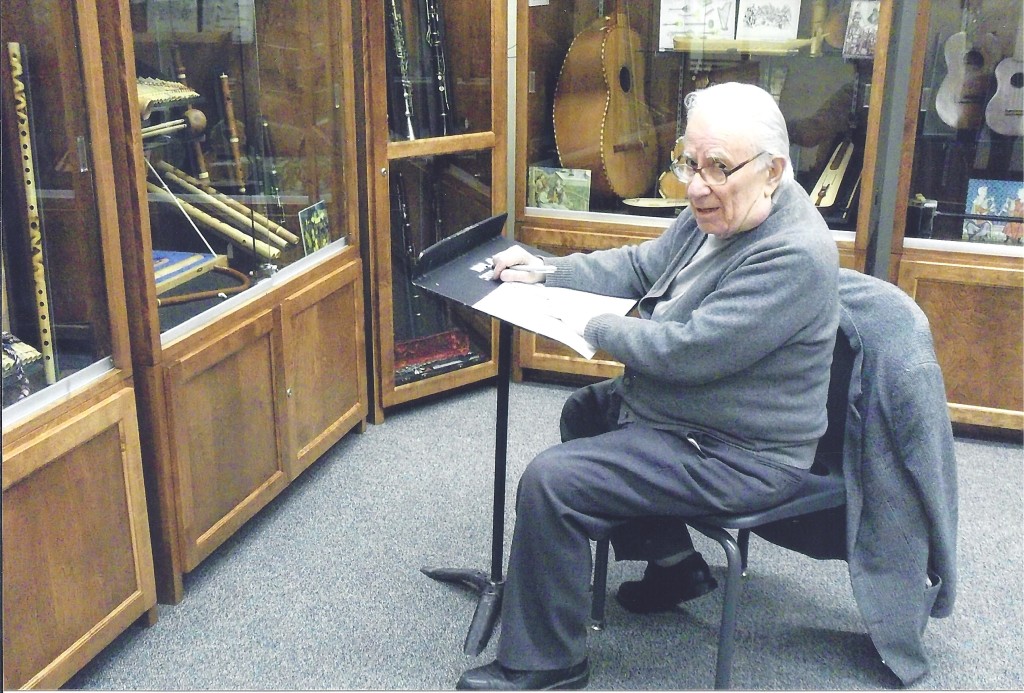
Because of the educational and academic intent of David Kaplan, the instruments in the Kaplan Room have now been divided into four groups that represent their “manner of sound production” or physical acoustics. Those four groups, devised by German musicologists Eric von Hornbostel and Curt Sachs in 1914, consist of aerophones (sound resulting from a disturbance or interruption of an air stream), chordophones (sound resulting from a vibrating stretched string), membranophones (sound resulting from vibrations of a stretched drum head), and idiophones (sound produced by the vibration of the “body” of the instrument itself). The scholastic approach of the entire collection is highlighted in this YouTube video:
The College of Education’s donation of a giant glass-enclosed display case in front of the Quance Theatre, and the Music Department’s offer to utilize their hallway display cabinet afforded the opportunity to exhibit many of the larger instruments in the collection previously unseen by the public.

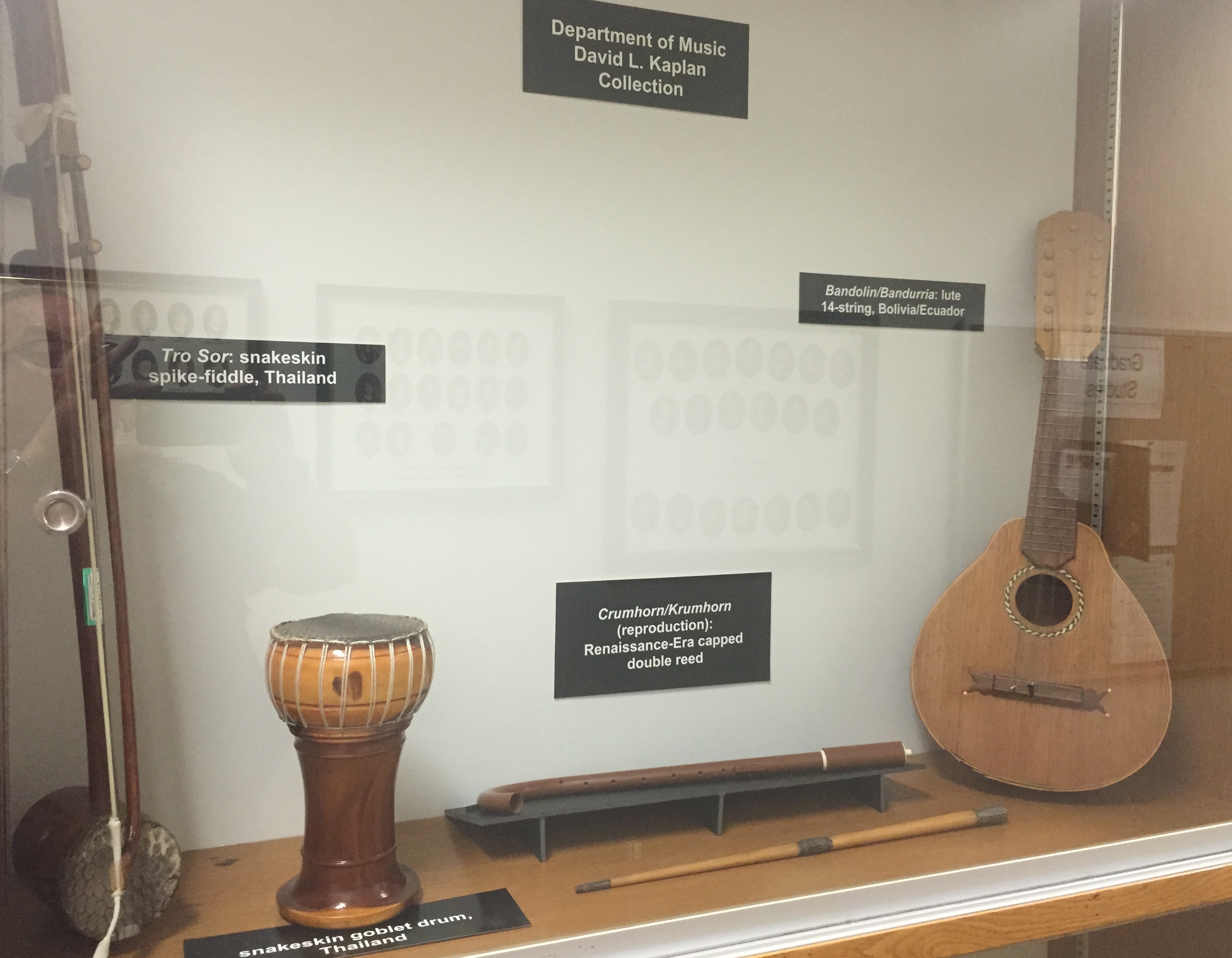

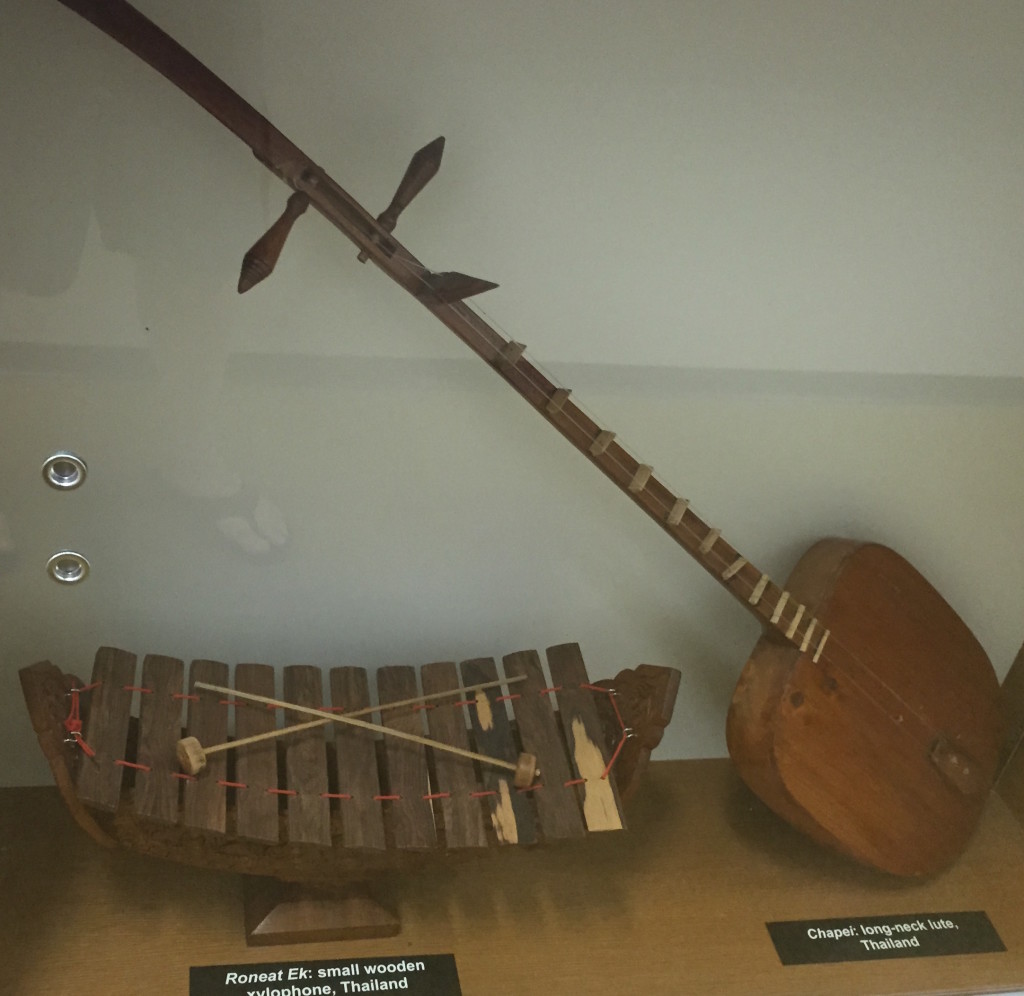
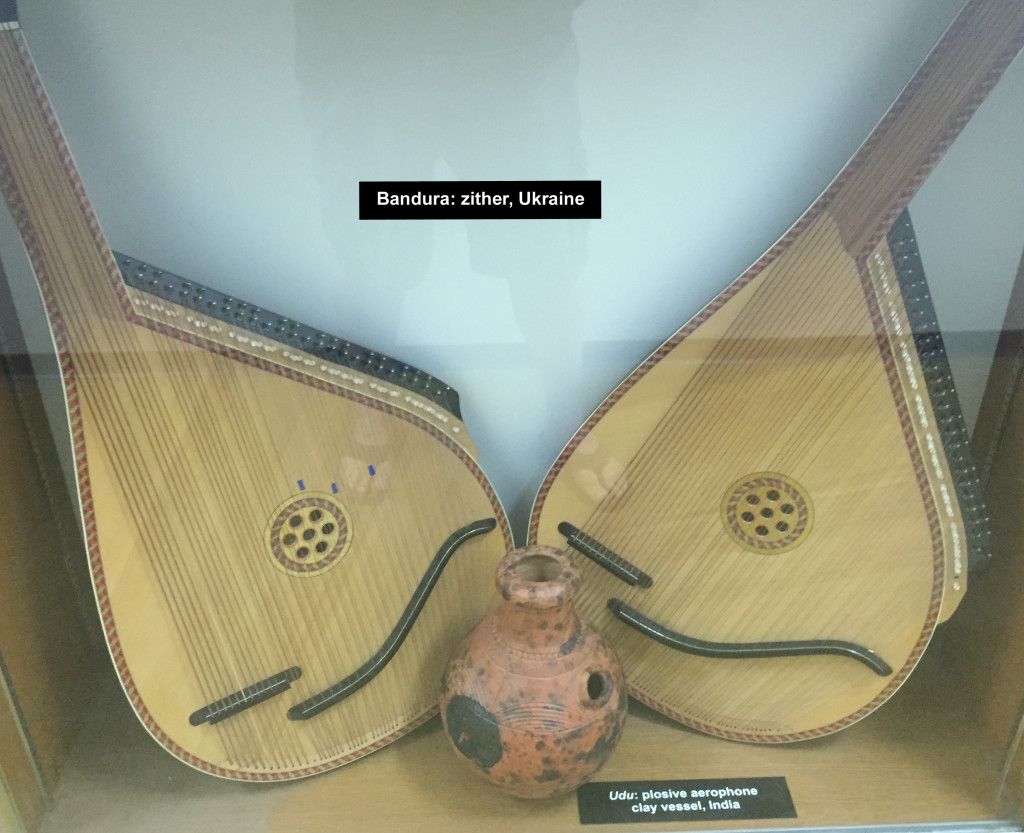
I was also able to create a new display inside the Kaplan Room of instruments used in the Peking Opera .
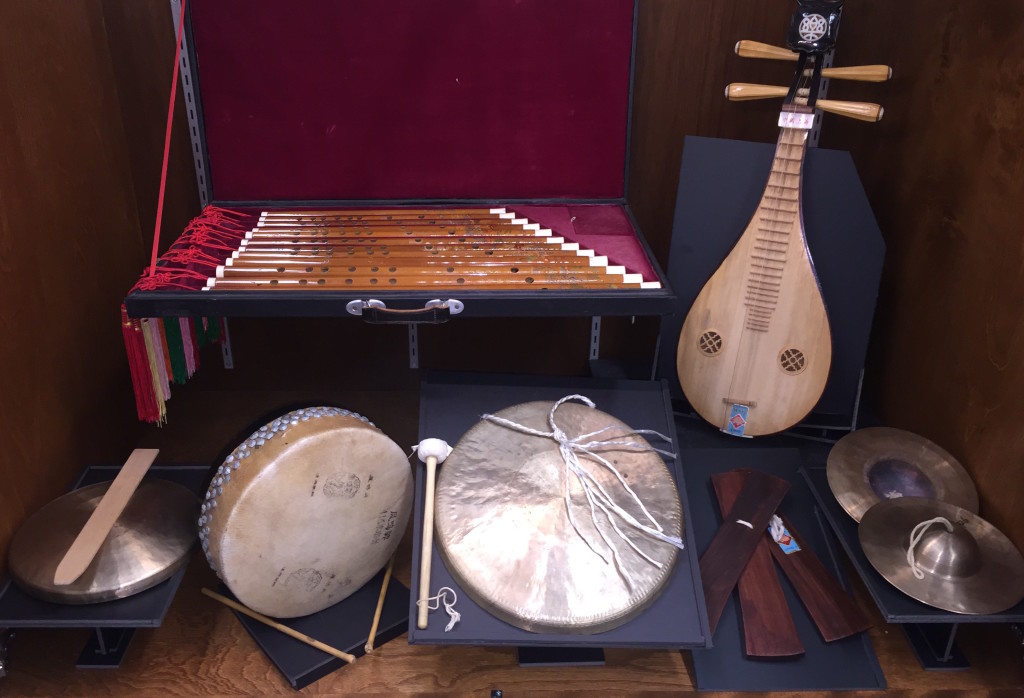
I would like to personally thank Dr. Glen Gillis, Interim Head of the Department of Music; Arts and Humanities Vice Dean David Parkinson; and Troy Linsley, Arts and Science Director of Administration and Operations for making my trip to the University of Saskatchewan possible. My research was co-funded by an ICCC (Interdisciplinary Centre for Culture and Creativity) Linking Fellowship, with matching funds from the College of Arts and Science, and the College of Education. I would like to give special thanks to Peter Stoicheff and Michelle Prytula, Deans of the Colleges of Arts and Science and Education respectively, for their combined support. I would like to especially acknowledge Greg Burke for all of his past and current commitment and devotion to David Kaplan’s vision. I would also like to thank all those at the university who enabled my research and made my time in Saskatoon so productive. Lastly, my heartfelt thanks to the members of the Kaplan family for their continued commitment to the musical legacy of David L. Kaplan.
